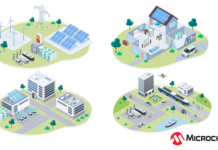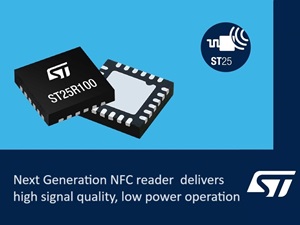
Digital ICs are used across various industries like automotive, consumer electronics, and telecommunication. They offer a range of benefits including lightweight, compact size, low cost, high reliability, and ease of replacement.
Due to their wide applications and advantages, according to Consegic Business Intelligence, the Digital IC Market size is estimated to reach over USD 179.47 Billion by 2031 from a value of USD 93.71 Billion in 2022. It is projected to grow by USD 98.79 Billion in 2023, growing at a CAGR of 7.7% from 2023 to 2031.
The rapidly evolving electronics industry is driving a high demand for energy-efficient digital ICs with low power consumption. Innovative techniques and industry developments are prioritizing power reduction while maximizing performance and efficiency.
Key Techniques in Low-Power Design
Dynamic Voltage and Frequency Scaling (DVFS)
DVFS adjusts the voltage and frequency of a processor dynamically based on the workload. Significant power savings are achieved by lowering the voltage and frequency during periods of low activity. This technique is commonly used in modern processors and embedded systems. It requires sophisticated control algorithms to balance performance and power consumption efficiently.
Clock Gating
By disabling the clock signal to portions of the circuit that are not in use, clock gating helps reduce dynamic power consumption, by preventing unnecessary switching activity. This technique ensures that only active circuit parts consume power, thereby increasing efficiency. This can be implemented at various levels, from coarse-grained gating at the block level to fine-grained gating at the flip-flop level.
Power Gating
It involves turning off the power to certain parts of a circuit when they are not in use. Power gating helps to reduce dynamic and leakage power, making it highly effective in standby modes. Power gating requires careful design of power switches and control circuits to ensure that modules can quickly wake up without affecting overall performance.
Multi-Threshold CMOS
By using transistors with different threshold voltages within the same circuit, multi-threshold CMOS achieves a balance between speed and power consumption. High-threshold transistors are used to minimize leakage current, while low-threshold transistors are used where speed is critical.
Adiabatic Switching
Adiabatic switching minimizes energy dissipation by slowly charging and discharging capacitors, thereby recycling energy within the circuit. This technique is based on reversible computing, where the amount of energy lost per operation is minimized.
Recent Advancements in Low-Power Design
Numerous significant advancements and developments have taken place in the industry. Renesas Electronics has successfully unveiled third-generation 5G mmWave beamforming ICs, integrating Dynamic Array Power technology. These cutting-edge ICs can efficiently adjust the output power across a wide range of power levels, offering exceptional flexibility and efficiency for 5G applications.
The integration of artificial intelligence at the edge has resulted in the development of power systems capable of dynamic adjustments based on real-time data, thus effectively optimizing power consumption. The industry has witnessed the introduction of advanced power management ICs that cater to a diverse range of applications, including automotive and industrial systems. Companies like ROHM have designed compact and consumer electronics-friendly energy-saving DC-DC converter ICs.
Recent research has been focusing on fine-tuning these techniques and venturing into new materials and transistor architectures. For instance, the multigate technology of FinFET shows great promise in mitigating leakage currents and enhancing overall power efficiency.
Conclusion
The ongoing innovation in low-power design techniques for digital ICs is primarily driven by the increasing need for energy efficiency in an interconnected world. The advancements in dynamic power management, novel IC architectures, and integration of intelligent systems are establishing new benchmarks for the industry, guaranteeing that future devices will be both powerful and energy-efficient.
Source: Consegic Business Intelligence: Digital IC Market


















